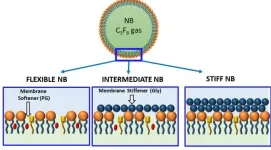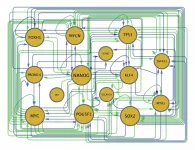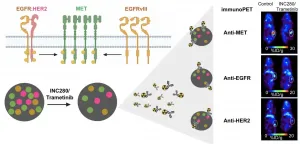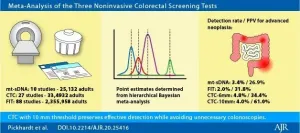Unmarried people given less intensive treatment for mantle cell lymphoma
2021-03-12
(Press-News.org) Mantle cell lymphoma is a malignant disease in which intensive treatment can prolong life. In a new study, scientists from Uppsala University and other Swedish universities show that people with mantle cell lymphoma who were unmarried, and those who had low educational attainment, were less often treated with a stem-cell transplantation, which may result in poorer survival. The findings have been published in the scientific journal Blood Advances.
Patients diagnosed with a mantle cell lymphoma (MCL) where the disease has spread receive intensive treatment with cytotoxic drugs and stem-cell transplantation. In a new study, researchers looked at which people are more likely to be offered transplants, and compared survival between those selected for transplantation versus those not selected. The study showed that transplantation prolongs life, but that people who were unmarried or had a lower level of education received a transplant less often.
"We don't know exactly why the unmarried or less educated patients got transplants less often, but we can speculate that less social support, or inadequate information, may lead to a fear - in both the patient and doctor alike - of undergoing a very demanding treatment. If you have lots of other diseases, you can't tolerate a transplant," says Ingrid Glimelius, chief physician and researcher at the Department of Immunology, Genetics and Pathology, who led the study.
The study included 369 patients from all over Sweden, diagnosed with MCL between 2000 and 2014 and aged 18-65 at the time. Among them, 40 per cent did not undergo a transplant during the initial treatment. According to the researchers, this was a surprisingly high proportion.
"In some cases, you shouldn't do a transplant - for instance, if the disease is very indolent or if you're too ill to tolerate the treatment. But this study shows that the people who weren't selected for a transplant also had clearly lower survival. This suggests that transplantation is a very important component in the treatment," Glimelius says.
Mortality within 100 days after transplantation was low, which also indicates that it is a safe treatment that could probably have been considered more often in Sweden. For people who are still unable to undergo a transplant, the study suggests that, instead of cytotoxic drugs alone, the option of providing new, modern and targeted drugs should be considered.
"Studies of this kind are important because they can lead to certain groups in society being offered more support. They can also act as an eye-opener for patients, health professionals and politicians alike, showing that there's still a need for more equality in health care in Sweden," says Ingrid Glimelius.
INFORMATION:
The study was conducted in collaboration with researchers at Karolinska Institutet and Lund University, and within the framework of a scientific partnership between Karolinska Institutet and Janssen Pharmaceutica NV.
ELSE PRESS RELEASES FROM THIS DATE:
2021-03-12
WINSTON-SALEM, NC - March 12, 2021 - The Wake Forest Institute for Regenerative Medicine is investigating how cats with chronic kidney disease could someday help inform treatment for humans.
In humans, treatment for chronic kidney disease -- a condition in which the kidneys are damaged and cannot filter blood as well as they should -- focuses on slowing the progression of the organ damage. The condition can progress to end-stage kidney failure, which is fatal without dialysis or a kidney transplant. An estimated 37 million people in the US suffer from chronic kidney disease, according to the Centers for Disease Control.
The American Veterinary Medical Association estimates there are about 58 million ...
2021-03-12
If you were given "ultrasound" in a word association game, "sound wave" might easily come to mind. But in recent years, a new term has surfaced: bubbles. Those ephemeral, globular shapes are proving useful in improving medical imaging, disease detection and targeted drug delivery. There's just one glitch: bubbles fizzle out soon after injection into the bloodstream.
Now, after 10 years' work, a multidisciplinary research team has built a better bubble. Their new formulations have resulted in nanoscale bubbles with customizable outer shells -- so small and durable that they can travel to and penetrate some of the ...
2021-03-12
(BOSTON) -- There is a great need to generate various types of cells for use in new therapies to replace tissues that are lost due to disease or injuries, or for studies outside the human body to improve our understanding of how organs and tissues function in health and disease. Many of these efforts start with human induced pluripotent stem cells (iPSCs) that, in theory, have the capacity to differentiate into virtually any cell type in the right culture conditions. The 2012 Nobel Prize awarded to Shinya Yamanaka recognized his discovery of a strategy that can reprogram adult cells to become iPSCs ...
2021-03-12
Arlington, Va. (March 12, 2021)--A new supplement offering guidance on severe COVID-19 management in resource-limited settings is now available on the American Journal of Tropical Medicine (AJTMH) website. Pragmatic Recommendations for the Management of Hospitalized COVID-19 Patients in Low- and Middle-Income Countries was coordinated by a COVID-LMIC Task Force headed by Alfred Papali, MD, of Atrium Health, Charlotte, NC, and Marcus Schultz, MD, PhD, of Mahidol University, Bangkok, Thailand; University of Oxford, United Kingdom; and Amsterdam University Medical Centers, The Netherlands. ...
2021-03-12
BUFFALO, N.Y. - University at Buffalo computer scientists have developed a tool that automatically identifies deepfake photos by analyzing light reflections in the eyes.
The tool proved 94% effective in experiments described in a paper accepted at the IEEE International Conference on Acoustics, Speech and Signal Processing to be held in June in Toronto, Canada.
"The cornea is almost like a perfect semisphere and is very reflective," says the paper's lead author, Siwei Lyu, PhD, SUNY Empire Innovation Professor in the Department of Computer Science and Engineering. "So, anything that is coming to the eye with a light emitting from those sources will have an image on ...
2021-03-12
Reston, VA--Immuno-positron emission tomography (PET) imaging can provide early insight into a tumor's response to targeted therapy, allowing physicians to select the most effective treatment for patients who have cancer. The new research was published in the March issue of The Journal of Nuclear Medicine.
The research showed that immuno-PET successfully visualizes changes in different cancer receptors (receptor tyrosine kinases, or RTKs) within tumors during targeted therapies. This gives physicians a tool that can be used to evaluate the effectiveness of a treatment soon after its administration.
"When healthy cells turn into cancer cells, there is a disruption in the RTK signaling. This makes RTKs a valuable therapeutic and ...
2021-03-12
Leesburg, VA, March 12, 2021--According to an open-access article in ARRS' American Journal of Roentgenology (AJR), compared with multi-target stool-DNA (mt-sDNA) and fecal immunochemical test (FIT), CT colonography (CTC) with 10 mm threshold most effectively targets advanced neoplasia (AN)--preserving detection while decreasing unnecessary colonoscopies.
"CTC performed with a polyp size threshold for colonoscopy referral set at 10 mm represents the most effective and efficient non-invasive screening test for colorectal cancer (CRC) prevention and detection," clarified first author Perry J. Pickhardt from the department of radiology ...
2021-03-12
UNIVERSITY PARK, Pa. -- Did you ever wonder how social networking applications like Facebook and LinkedIn make recommendations on the people you should friend or pages you should follow?
Behind the scenes are machine learning models that classify nodes based on the data they contain about users -- for example, their level of education, location or political affiliation. The models then use these classifications to recommend people and pages to each user. But there is significant bias in the recommendations made by these models -- known as graph neural networks (GNNs) ...
2021-03-12
A new study by UC Davis MIND Institute researchers suggests that executive control differences in autism spectrum disorder (ASD) may be the result of a unique approach, rather than an impairment.
Executive control difficulties are common in individuals with autism and are associated with challenges completing tasks and managing time. The study, published in Biological Psychiatry: Cognitive Neuroscience and Neuroimaging, sought to tease out whether these difficulties represent a disruption in proactive executive control (engaged and maintained before a ...
2021-03-12
Quantum dots are manmade nanoparticles of semiconducting material comprising only a few thousand atoms. Because of the small number of atoms, a quantum dot's properties lie between those of single atoms or molecules and bulk material with a huge number of atoms. By changing the nanoparticles' size and shape, it is possible to fine-tune their electronic and optical properties - how electrons bond and move through the material, and how light is absorbed and emitted by it.
Thanks to increasingly refined control of the nanoparticles' size and shape, the number ...
LAST 30 PRESS RELEASES:
[Press-News.org] Unmarried people given less intensive treatment for mantle cell lymphoma





